No strength to write | AUGUST 2
Ruth and Wilhelm Hesse, residents of Hamburg, had two little girls, Helen (b. 1933) and Eva (b. 1936). Wilhelm kept diaries for both girls. Between the May 3 and August 2 entries, there is a long gap (a very brief notice regarding Helen’s birthday on June 30 seems to have been added later). As Wilhelm writes, the seriousness of the times made it hard to write, so much so that 5-year-old Helen, who had been in a children’s home in Wohldorf-Duvenstedt since the middle of May, complained that she was not receiving any letters from her parents. While Wilhelm is generally pleased with his daughter’s development, he mentions that Helen and three of her little friends had taken a beating for picking 20 unripe peaches from a tree and biting into them. Perhaps the children’s blissful lack of awareness of what was brewing around them and their innocent transgression provided the young father with a minimal sense of normalcy.
Rough sea and swell | JULY 29
In the eyes of the Nazis, the fact that both his parents had converted to Catholicism in the year of his birth, 1912, and that he was baptized as an infant, did not make Anton Felix Perl any less of a Jew. After attending a Catholic high school in Vienna, the Schottengymnasium, he went to medical school, from which he graduated in 1936. Two years into his residency at the Allgemeines Krankenhaus, he was dismissed on racial grounds. In this stressful situation, Dr. Perl contacted high-ranking Catholic clergymen in Canada. With the help of the archbishops of Winnipeg and Regina, his immigration was arranged, and after a seven-day voyage from Liverpool, he arrived in Canada and got his civil examination stamp from the immigration office in Quebec on July 29, 1938. Canada’s immigration policy was extremely restrictive, especially towards those persecuted for religious or “racial” reasons. For once, Dr. Perl’s baptism certificate proved useful.
The veneer of legality | JULY 28
Identification cards for use within Germany were introduced by decree of the Minister of the Interior, Wilhelm Frick, on July 22, 1938. Frick, a lawyer by training, consistently worked to furnish the anti-democratic, anti-Jewish measures of the regime with the veneer of legality. Frick’s initial order was vague about who would be required to carry IDs (“The Reich Minister of the Interior determines which groups of German nationals and to what extent are subject to compulsory identification”), but this was clarified in an announcement on July 23. Apart from men of military service age, it was mainly Jews of all age-groups who were required to apply for IDs. The purpose of the IDs was to clearly identify and stigmatize Jews and further separate them from the rest of the population. In a July 28 notice, the Jewish Telegraphic Agency reports on this latest legal atrocity.
A scholar’s departure | JULY 27
Thanks to decades of scholarly work, notably his seminal works “The Religious Views of the Pharisees” (“Die Religionsanschauungen der Pharisäer,” 1904) and “Jewish Liturgy: A Comprehensive History” (“Der Jüdische Gottesdienst in seiner Entwicklung,” 1913), Prof. Ismar Elbogen was well known internationally, when in 1938, he overcame years of hesitation and decided that the time had come to leave. His efforts as chairman of the education committee of the Reich Representation of German Jews had been severely hampered by the regime, and his last book published in Germany, “The History of Jews in Germany” (“Die Geschichte der Juden in Deutschland,” 1935) had been censored heavily by the propaganda ministry. In the 1920s, several institutions of higher learning in the US (he taught at Hebrew Union College and turned down an offer to teach at Columbia University) had offered him lectureships, so that he had significant contacts overseas when the time came to leave Germany. In today’s report, the Jewish Telegraphic Agency informs its readers of the noted scholar’s impending departure.
The League for Human Rights | JULY 26
Hugo Jellinek was a man of many talents. The outbreak of WWI forced him to quit medical school in Vienna. As a soldier, he was severely wounded in Samarkand and fell in love with his nurse, who later became the mother of his three daughters. The couple settled down in Tashkent, Uzbekistan. His young wife having died in 1926, he fled the Soviet Union in 1930 and ultimately returned to Vienna, where he utilized his knowledge of 8 languages as a translator and also worked as a freelance journalist. Thanks to a warning about impending arrest by the Nazis, he was able to escape to Brünn (Czechoslovakia) in June 1938. His eldest daughter, eighteen year-old Gisella Nadja, departed for Palestine the same day. In this colorful letter, Hugo shows fatherly concern for Nadja’s well-being, but also talks at length about the hardship he himself has faced as a refugee and reports that his cousin’s son is interned at the Dachau Concentration Camp. He mentions with gratification what he calls the “League,” probably referring to the aid center of the “League for Human Rights,” which was looking after the refugees, defying Hitler’s sinister goals. Ultimately, however, the most important thing for him was the fight for a country of one’s own.
Homeland | JULY 25
Since the middle of the nineteenth century, Austrian citizens, regardless of ethnicity or religion, were required to keep a Heimatschein, a document testifying to their belonging to a certain locality. In practice, this was of relevance mainly if the holder fell upon hard times: according to the law, it was the home community listed in the Heimatschein that had to support the person in case of poverty or joblessness. The document shown here was issued on July 25, 1938, well over four months since the Nazi takeover, showing that for the time being, at least in this context, the policy had not changed vis-à-vis the country’s Jews.
In Memoriam | JULY 24
Ludwig Schönmann, born in Neu-Isenburg in Germany in 1865, had come to Austria early in life and was thus spared the first five years of the Hitler regime. But from the day the German army entered Austria to annex the neighboring country in March 1938, the 73-year-old witnessed all the same persecution that had befallen Jews in Germany – only at an accelerated pace. Jewish businesses were ransacked and their owners expropriated. Jews were publicly humiliated and expelled from the Burgenland region, where they had first settled in the 13th century. Jewish students and teachers were pushed out of the universities, and the infamous Nuremberg Laws were extended to Austria, leading to the removal of Jews from public service. The first page of a memorial album in honor of Ludwig Schönmann lists July 24 as the day of his death.
Excuses from Évian | JULY 23
After the Anschluss, the problem of refugees from Germany and Austria became even more pressing. In order to address the issue, US President Franklin D. Roosevelt had called for an international conference in Évian in July, 1938. The conference was anticipated with great hopes by the German-Jewish community but, due to the refusal of the international community to adjust immigration quotas to actual needs, the impact of Évian was extremely limited. Nevertheless, the Jüdisches Gemeindeblatt für Rheinland und Westfalen (Jewish Community Newsletter for Rhineland and Westphalia) tried to present some positive results by pointing out the readiness of several South American countries to absorb Jewish refugees. Regardless of the palpable attempt to remain hopeful, the underlying tone of this front page article in the July 23 issue is not one of excessive optimism.
Bread for strangers | JULY 22
In this letter, Isidor Nassauer, based in Neuwied am Rhein, cooly describes his emigration plans to his friends, the Moser family, who are already in the US. Unsolicited, his brother-in-law has sent an affidavit, which due to a missing signature could not be used and had to be sent back. While waiting for the signed document, Mr. Nassauer is taking English lessons. Even though he has no idea how he will subsist in America, the fact that “so much bread has been baked for strangers” there gives him confidence. He is most concerned about selling the family house and seems certain that selling or liquidating the business (a brush factory) will be easy. In general, Jews were forced to sell their property far below its actual value.
Cautious optimism | JULY 21
As reported by the Jewish Telegraphic Agency on this day in 1938, five days after the end of the Évian Conference (July 6-15), the Reich Representation of Jews in Germany published its first statement on the outcome of the convention in the Jüdische Rundschau, the paper of the Zionist movement. The organization voiced cautious optimism and opined that the Intergovernmental Committee on Refugees, which had been set up at the conference with the goal of facilitating permanent resettlement, would have a positive effect on emigration.
“Jews Unmasked” | JULY 20
Immediately after their rise to power in January 1933, the Nazis began to extend their control over every aspect of cultural life in Germany. As a popular medium capable of reaching large numbers of people—and one perceived as being dominated by Jews—film was of central importance to the new regime. Before the production of a new movie could begin, the script had to pass pre-censorship. The final product was scrutinized by the censorship authority for film (Film-Prüfstelle) of the Reich Propaganda Ministry. Under the Nazi regime, the state’s relationship with the film industry changed. While prior to 1933, authorities had primarily sought to censor or suppress material deemed harmful, the Nazi regime actively instrumentalized the film industry to promote National Socialist ideology. The anti-Semitic film “Juden ohne Maske” (“Jews unmasked”), whose authorization card from the censors is shown here, is such a case. It received the rating “valuable to national policy”, but it was also restricted to screenings for adult audiences in the context of NSDAP events.
Namesakes | JULY 12
When 28-year-old Kurt Kleinmann of Vienna wrote to the Kleinmans in America, he could not have hoped for a kinder, more exuberant response than what he received from 25-year-old Helen. After finding the address of a Kleinman family in the US, Kurt had asked the total strangers in a letter dated May 25 to help him leave Austria by providing him with an affidavit. He had finished law school in Vienna and was now running his father’s wine business. Helen readily adopts the theory that the Kleinmanns and the Kleinmans might actually be related to one another, promising her “cousin” to procure an affidavit for him within the week. Affably and vivaciously, she assures him that the Kleinmans will correspond with him to make the time until departure feel shorter.
Impeccable references | JULY 2
The German lawyer Paul Schrag was employed at the Institut d’Economie Européenne in Brussels. He was planning to embark on the journey to the United States from Le Havre on July 15 with his Jewish wife, Suzanne, and their infant child. In his letter of July 2 to Prof. Max Gutzwiller in Fribourg, Switzerland, Schrag asks for a letter of reference for use in the United States. Gutzwiller, a fierce critic of the Nazis and also married to a Jewish woman, had left his chair for German Private Law and Roman Law at the University of Heidelberg in 1936. Schrag obviously enjoyed the esteem of his employers. The management of the institute had agreed to reserve the position of director general for him until the end of the year and even entrusted him with a “research mission” in order to enable him to look into his professional prospects in America without major pressure.
Gestapo warrant for protective custody | JUNE 29
The Gestapo warrant for protective custody dated June 29, 1939 confirmed the hitherto merely formal arrest of the Jewish and communist painter Lina (Lea) Grundig (also see June 1). After her conviction of high treason, she was held at the Dresden Court Jail.
A professional farewell letter | JUNE 28
The observance of Shabbat, holidays, and kashrut was so deeply ingrained in the life of the Lamm family in Munich that even the Catholic cook, Babett, saw to it that the traditional customs were adhered to. While traditional in their understanding of Judaism, the Lamms were open to worldly matters. After high school, Hans briefly studied law, but, understanding that in the new political climate, there was no way a Jew could advance in the field, he embarked on a career in journalism instead. The career paths of Jewish jounalists at the time were also stymied by the fact that non-Jewish papers would not hire them and Jewish ones were forced to close down one by one. In 1937, Lamm relocated to Berlin, where he studied with Leo Baeck and Ismar Elbogen at the Lehranstalt für die Wissenschaft des Judentums, in order to deepen his understanding of Judaism. Deeply rooted in German culture as he was, it was difficult for him to decide to emigrate. Yet eventually, his older brother convinced him that there was no future for Jews in Germany. In this letter, the 25 year-old Lamm cordially and politely, yet without palpable emotion, bids farewell to the editors of the Jewish monthly, Der Morgen, a high-level publication to which he had been contributing, expressing his gratitude for their support.
Shattered existence | JUNE 26
The first major rupture in artist Gustav Wolf’s biography had occurred during World War I. He had volunteered for frontline duty and was badly injured. His brother Willy was killed in combat. The works in which he processed his wartime experiences leave no doubt about his feelings. Instead of glorifying war, he shows its horrors. His confrontation with antisemitism during and after the war led him to an increased awareness of his own Jewishness. In 1920 he accepted a professorship at the Baden Art School in Karlsruhe, trying to realize his ideal of an equitable partnership between teacher and student. After a year, he quit this “dead activity,” referring to the school as “an academy of schemers.” In 1929, he designed the set for Fritz Lang’s silent film “Woman in the Moon,” an early science-fiction movie. Upon the Nazi rise to power in 1933, he canceled his memberships with all the artists’ associations to which he had belonged. In his letter to the Baden Secession, he explained his decision with the following words: “I must first get my bearings again. The foundations of my existence have been called into question and shaken.” After extended stays in Switzerland, Italy and Greece, he returned to Germany in 1937. In February 1938, he boarded a ship to New York. June 26, 1938 was his 49th birthday.
Liver dumplings, Christmas stollen, matzo balls | JUNE 25
In Anni Buff’s personal recipe book, dated June 25, 1938, traditional Bavarian dishes, like liver dumplings, Christmas stollen, and cottage cheese doughnuts, certainly outweighed traditional Jewish ones, such as matzo balls. The Jewish community in her native Krumbach was well integrated. Since its peak in the early 19th century, when it constituted about 46% of the population, its ranks had declined considerably, and by 1933, only 1,5% of Krumbachers were Jewish. In spite of this negligible presence of Jews, National Socialism with its rabidly antisemitic message took hold fast, and even before it became national policy, Jews in the little town were harassed by SA men. By 1938, the abuse had become so unbearable that Anni’s father Julius, who dealt in upholstery material, began to explore possibilities to find a new home on safer shores, such as the US, the Dominican Republic, or Shanghai. Not even the fact that he had lost a brother in WWI and had himself served in the 16. Bavarian Reserve Infantry Regiment—along with a young Austrian named Adolf Hitler—did anything to improve his standing with Nazi authorities.
Skills training for Palestine | JUNE 24
When the Halutz (Pioneer) Movement first began to establish itself in Germany in the 1920s, it had a hard time gaining traction among the country’s mostly assimilated Jews, who saw themselves as “German citizens of Jewish faith.” The Movement, which aimed to prepare young Jews for life in Palestine by teaching the Hebrew language as well as agricultural and artisanal skills, got its first boost during the Great Depression (from 1929), which made emigration more attractive as an opportunity for economic improvement. But even more significant growth took place after the Nazis’ rise to power: so-called “Hachscharot” sprung up all over Germany, instilling young Jews with a meaningful Jewish identity and imparting valuable skills. The photo presented here shows graduates of the Jewish Professional School for Seamstresses on Heimhuderstraße.
Interview at the US-Consulate | JUNE 23
After his first official attempt to immigrate had failed under adventurous circumstances, 20 year-old Heinz Ries of Berlin made another effort to get permission to live in the US permanently and legally. For months, he had struggled in the shadows as an undocumented immigrant in New York. After obtaining an affidavit of support, Ries traveled to Havana and visited the US consulate there on June 23, 1938. Finally, he was admitted legal entry into the United States. After the war he returned to Germany for some time, first in the employment of the Allies, then as a photo journalist for the New York Times. The photographs of the Berlin Blockade and the Airlift, taken during these years, made him world-famous under the name Henry Ries.
Billy Wilder | JUNE 22
Samuel (later “Billy”) Wilder had a mind of his own: born in 1906 into an Austrian-Jewish family in the Galician town of Sucha Beskidzka, then part of the Austro-Hungarian Empire, he was expected to join his father’s business, which consisted mainly of a chain of railroad restaurants. But after the Realgymnasium and a brief stint at law school in Vienna (he dropped out after three months), he decided to follow his true leanings. At the paper Die Stunde, a tabloid of questionable repute, he got his first shot at practicing his writing skills. In 1926, an opportunity arose for him to move to Berlin, where he freelanced for various tabloids and took up screenwriting. After the Nazis’ ascent to power, Wilder first moved to Paris and was given the opportunity to direct his first movie, Mauvaise graine. In 1934 he entered the US on a visitors visa. From 1936, he was under contract at Paramount Pictures. June 22, 1938 was his 32nd birthday – the sixth he celebrated in exile.
A weekly lifeline | JUNE 21
As the influx of refugees from Nazi Germany intensified, what had begun in 1934 as the anniversary brochure of the German Jewish Club in New York quickly turned into a professional publication and a lifeline for the uprooted. With its offer of a wide range of cultural and athletic activities, the monthly was an emotional anchor for the newcomers, but it also offered practical help getting settled in the new country. This issue of the Aufbau from June 1938 features a large number of rental ads, mostly for fully furnished rooms, often in the Washington Heights neighborhood of Northern Manhattan, thereby giving some extra income to the owners or main tenants while providing affordable housing to refugees who usually arrived with very little money and property.
The crowd looked on quietly | JUNE 20
Section 17 of the Third Supplementary Decree on the Reich Citizenship law (Reichsbürgergesetz), issued on June 14, called for marking Jewish businesses at a date yet to be determined. The Nazis lost no time. According to this article by the Jewish Telegraphic Agency, days later, the word “Jew” and Nazi slogans were smeared on Jewish shop windows throughout Berlin in an organized fashion, with the same red, hard-to-remove oil paint used everywhere. There could be no doubt that the action was carried out with blessings from above. While no opposition from the non-Jewish population is recorded, the correspondent does point out that unlike in Vienna and in less affluent parts of Berlin, the crowd on Kurfürstendamm looked on quietly, without major enthusiasm. Tension among Jews was intensified by reports of plans to build labor camps where Jews apprehended in recent raids were to be put to work.
Anne knows better | JUNE 12
Leaving behind an increasingly antisemitic Germany, the Frank family of Frankfurt am Main fled to the Netherlands shortly after the Nazis rose to power. They settled on Merwedeplein in Amsterdam’s River Quarter, where more and more German-speaking immigrants were finding refuge. So large was the influx of Jews that some in the Dutch Jewish community were worried it would affect their standing in society and cause antisemitism. The Franks’ older daughter, Margot, went to school on Jekerstraat. Anne attended the Sixth Montessori School, a mere 5 minutes away from the family home. Fifteen of her classmates were Jewish. She loved telling and writing stories. Anne was curious, demanding, interested and very articulate. As her good friend Hanneli Goslar’s mother would say, “God knows everything, but Anne knows better.” In 1938, Anne’s father, Otto, applied for immigration visas to the United States. June 12 was her 9th birthday.
No Jews allowed | JUNE 2
In 19th century, the Central Association of German Citizens of Jewish Faith began to publish lists of spas and hotels at which Jewish guests were not welcome. Some resorts even advertised themselves as judenfrei (“free of Jews”). After World War I, the phenomenon known as Bäder-Antisemitismus (“spa antisemitism”) increased, and with the Nazi rise to power in 1933, it became official policy. By 1935, Jews had been effectively banned from the Northern German bathing resorts, and from spas in the interior of the country by 1937. It was not until the Anschluss in March 1938 that Jews were pushed out of Austrian spas as well. Bad Ischl and other locations in the Salzkammergut region were particularly popular with Jews, to the point that in 1922, the Austrian-Jewish writer Hugo Bettauer quipped that “it caused a stir when people suspected of being Aryans showed up.” In a notice from June 2, The Jewish Telegraphic Agency reports that at the behest of the Nazi commissioner in charge, Jews were to be “segregated in Jewish hotels and pensions” and were no longer permitted to attend cultural events in Bad Ischl.
The Jewish Hospital in Hamburg | MAY 29
Depicted here is the facade of the Jewish Hospital in Hamburg. The photograph is part of an album preceded by the above inscription dated May 29, 1938. The hospital was endowed by merchant and banker Salomon Heine, also known as the “Rothschild of Hamburg,” in memory of his late wife Betty and inaugurated in 1843. The poet Heinrich Heine, Salomon’s nephew and beneficiary, honored the occasion with his poem Das neue israelitische Hospital zu Hamburg, in which he called it “A hospital for poor, sick Jews, for human beings who are thrice miserable, afflicted with three vicious ailments, with poverty, bodily pain, and Jewishness!” Even though the Nazi regime had been undermining the hospital’s finances since 1933, it had withstood these measures and was still able to take care of its patients in May 1938.
Brit Shalom | MAY 28
In 1933, the distinguished philosopher of religion Martin Buber decided to relinquish his honorary professorship at Goethe University in Frankfurt/Main in protest against the Nazi rise to power. Consequently, the regime forbade him to give public lectures. In the years to follow, Buber founded the Central Office for Jewish Adult Education and countered the Nazis’ efforts to marginalize and destroy German Jewry by strengthening Jewish identity through education. It was not until May 1938 that he followed a call to the Hebrew University to assume the new chair for Social Philosophy and moved to Jerusalem with his wife Paula, a writer. The couple settled down in the Talbiyeh neighborhood in the Western part of the city, which at the time was inhabited by both Jews and Arabs. It borders on Rehavia, then a major stronghold of immigrants from Germany. Buber was among those envisioning peaceful coexistence in a bi-national state.
Henry Kissinger turns 15 | MAY 27
On May 27, 15 year-old Heinz Alfred (later Henry) Kissinger celebrated his birthday in his native Fürth one last time. Heinz had attended the Jewish elementary school and a Gymnasium in his home town. From 1933, Jewish children were no longer allowed to attend public schools, so that only the Israelitische Realschule was open to him and his younger brother, Walter. Elsewhere, too, the new times made themselves felt in the children’s lives. Suddenly, they were no longer allowed to join the other kids and swim in the river Altmühl when they were visiting with their grandparents in Leutershausen. Heinz was an avid fan of the local soccer team and a player himself, but under the Nazis, Jews were prohibited from attending their games. Even though his father, Louis, had been put on permanent furlough from his job as a teacher at a girls school when the Law for the Restoration of the Professional Civil Service came into effect in 1933, he was inclined to stick it out in Germany. It was thanks to his resolute mother, Paula (née Stern), that in April 1938, Louis Kissinger applied for passports. By May, the family’s preparations for emigration were in full gear. Relatives of hers had emigrated to the US already before 1933 and were now helping with the bureaucratic groundwork.
Paperwork | MAY 26
Since 1937, Lina and Siegmund Günzburger of Lörrach in southwest Germany and their son, Herbert, had been preparing their paperwork for emigration. The requirements amounted to nothing short of a nightmare. Prospective emigrants had to procure numerous personal documents, letters of recommendation, and affidavits. They were also required to prepare an inventory of all their belongings and to document that they had paid all their taxes. Apparently, the required documents also included this copy of the marriage certificate for Siegmund’s grandparents. Especially perfidious was the so-called “Reich Flight Tax.” Originally introduced in the waning days of the Weimar Republic to prevent capital flight in reaction to the government’s austerity policy, under the Nazis, it became a tool to cynically punish the Jews for leaving a country that was doing everything it could to make it unbearable for them to stay.
More conflict in Palestine | MAY 25
Time and again, unsettling news about sectarian violence in Palestine reached Jewish readers in the diaspora. On May 25, the Jewish Telegraphic Agency, a prime source of information on the situation of the Jews under the Nazis and of developments in the Yishuv, reports under the headline “6 Deaths Added to Terror Toll in Palestine.” It writes about the latest victims in Jerusalem, Haifa and Tiberias—both Jews and Arabs—and the circumstances of their deaths.
Soldier, pacifist, cabaret artist | MAY 24
After three decades of making his fellow Austrians laugh, cabaret artist Fritz Grünbaum’s career was brought to an abrupt end by the Anschluss. His politics alone would have sufficed to make him intolerable for the new regime: Grünbaum had returned from action in World War I not only a decorated soldier but also an avowed pacifist. As for Nazism, he did not mince words. Since 1933, he had been getting more political, and when during a 1938 performance a power outage caused the stage lights to go out, he commented glibly, “I see nothing, absolutely nothing. I must have accidentally gotten myself into National Socialist culture.” His last performance at the famous cabaret “Simpl” in Vienna just two days before the Anschluss was followed by an artistic ban on Jews. Grünbaum and his wife Lilly, a niece of Theodor Herzl, tried to flee to Czechoslovakia but were turned back at the border. On May 24, he was interned at the Dachau concentration camp. Grünbaum was also known as a serious art collector, mostly of modernist Austrian works, and a librettist.
Faster and faster | MAY 23
In April 1938, Rabbi Leo Baeck, the president of the Reich Representation of Jews in Germany and as such the main representative of German Jewry, had presciently written, “And this year will be a difficult year; the wheel is turning faster and faster. It will really test our nerves and our capacity for careful thought.” Baeck had been an army chaplain in World War I and as a patriot must have been extremely pained by the persecution of German Jewry. With large parts of the community reduced to poverty, Jewish rights curtailed, Jews pushed to the margins of society, and no prospects for improvement, Rabbi Baeck’s 65th birthday on May 23 probably was quite a somber affair.

